
views
Cleaning Finished Paneling
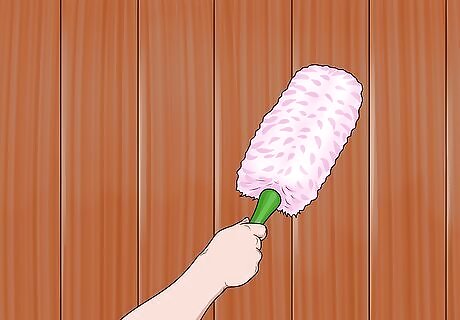
Dust paneling monthly with a soft cloth or rag. Dust paneling once a month or whenever it looks dusty. Most paneling cleaning can be accomplished by dusting alone. This easy preventative cleaning will save you from having to use a more labor-heavy type of cleaning later on. In order to dust paneling that is higher than you can reach with a rag, you can use the dusting extension on your vacuum cleaner or an extendable hand-held duster.
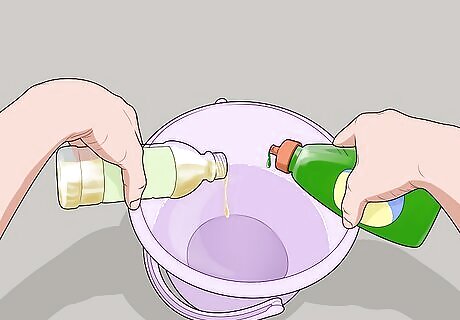
Pour a small amount of dish soap into a bucket. Then, pour in a few drops of vegetable oil. Finally, fill the bucket with warm water from your kitchen faucet. This mixture will effectively clean and polish paneling, while maintaining its visually appealing shine. Use this cleaning soap/oil mixture only if there are marks or stains on your paneling that cannot be removed by dusting.
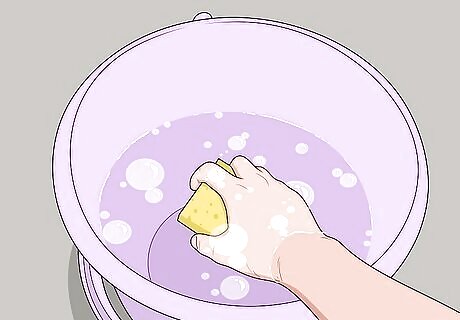
Dip a sponge or rag into the bucket. Wipe down the paneling with this non-abrasive cloth. Ring out the excess water, so that your rag is damp, not wet. Overly wet rags can penetrate the finish and cause staining. When cleaning any type of paneling, it's imperative that you not let water soak into the paneling. This can both distort the wood or other material beneath the finish, and also warp the finishing itself.
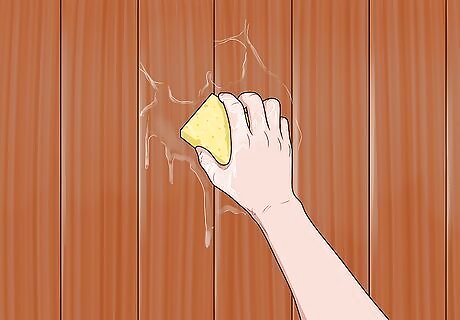
Wipe the paneling with the damp sponge or rag. Start from the bottom and wipe straight upward to avoid streaking. Wipe the wood in small sections. Work quickly and thoroughly. Remember that you don't need to scrub the paneling very hard; a light touch will be enough to clean the surface.
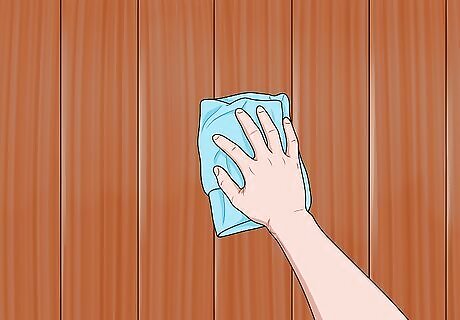
Dry paneling with a clean lint-free cloth. Continue to rub along the vertical grain of the wood when you're rubbing it dry. Drying the paneling finish with the lint-free cloth will also buff the paneling, rub in the oil from the soap/oil mixture, and give the paneling an attractive sheen. Work in small sections by first washing and then drying the area before moving on. Otherwise, you'll leave a large portion of the paneling wet at once and risk damaging the finish. If you leave the water on the finished paneling for too long, it will discolor the finish and give it an unattractive gray tint.
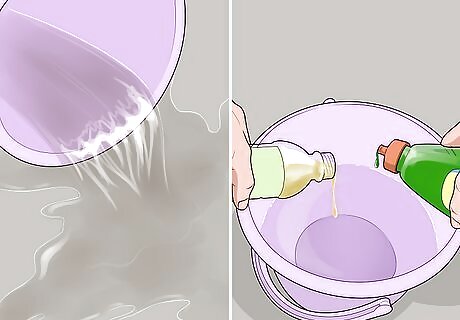
Refill the bucket as needed. As you continue to rinse and re-dampen the cleaning rag in the bucket, the water will become dirty. At this point, dump out and refresh the water and soap solution. You can then return to wiping down the sections of paneling. Wash out the rag or sponge well to remove dirt and debris.
Oiling and Cleaning Unfinished Wood Paneling
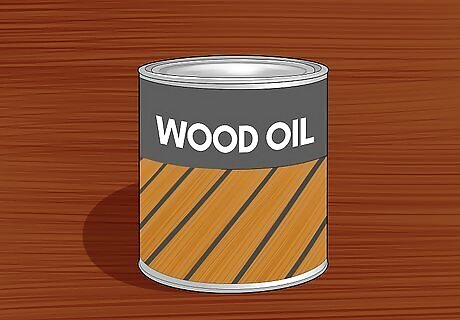
Prepare or purchase wood oil. To both clean and oil your wood you can use 1 cup (240 ml) olive oil mixed with 1/4 cup (60 ml) white vinegar. Combine these ingredients into a spray bottle. Light shake the bottle to mix the oil and vinegar, and then screw on the spray cap. You should be able to purchase wood oil specifically designed for unfinished paneling at your local hardware or home-supply store. Be careful when cleaning unfinished paneling. The unprotected wood can easily absorb water, grease, and other liquids, and can quickly become warped or distorted.

Test the solution on a small section of paneling. Always test any solutions on a small area first before trying to clean a large section of your paneling. Using a clean cloth, wipe the solution on a small, inconspicuous area and let sit. Check the test area after a few minutes to make sure there is no damage before continuing.
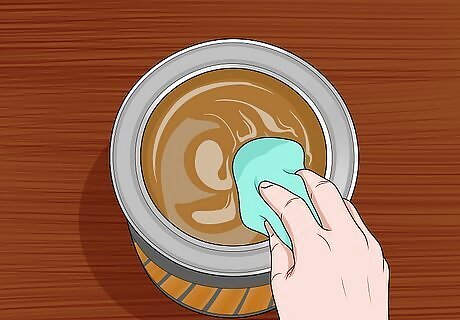
Spray a soft cloth with your oil solution. Make sure that the cloth is damp but not wet; if it's wet, you risk causing water damage to your unfinished wood. Then, gently rub the oil/vinegar mixture into the wood. Work the oil into the wood by rubbing small sections at a time, working from the bottom to the top. Make sure to rub the oil in along the direction of the grain. This will allow the wood time to absorb the oil and will maintain the beauty of your unfinished wood paneling.
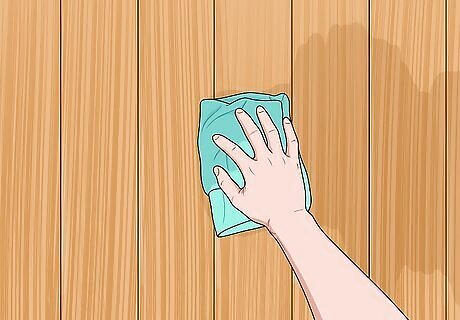
Apply a second layer of the oil solution. If the unfinished wood paneling is still dry after applying a first layer of oil, then another coat may be necessary. Let the first application sit for a few minutes before reapplying the vinegar and oil solution.
Cleaning and Removing Mold from Painted Paneling
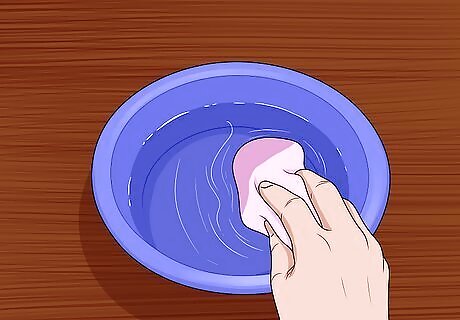
Dampen a sponge or clean rag. Clean the painted paneling by wiping it with the damp rag. At this point, the sponge should be dampened only with water. If you have already tried cleaning painted paneling with only water and were unsuccessful, visit a hardware store and look for a chemical product which will clean painted paneling.
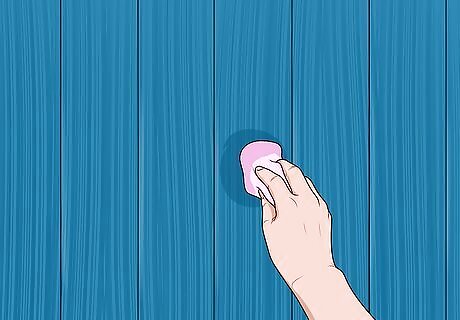
Wipe a small test area with a damp sponge. Before you start cleaning a large surface of paneling, you can wipe clean a small area to make sure that the water will not discolor or smear the paint.
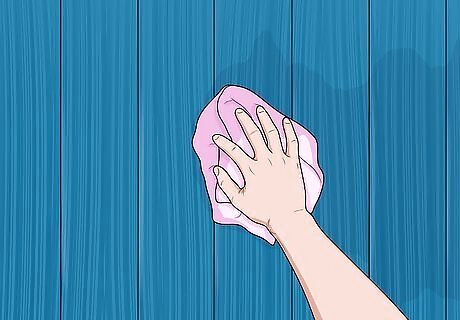
Clean the full surface of the painted paneling. Once you're sure the paneling is undamaged from your small test, use the damp sponge to clean the full area of the paneling. Rinse out the sponge as it becomes dirty, and re-dampen it before continuing to wipe down the rest of the paneling. Painted paneling, unlike finished paneling, will be covered in a colored paint which conceals the grain of the wood. Consequently, it's not as important that you wipe the paneling along the wood grain.
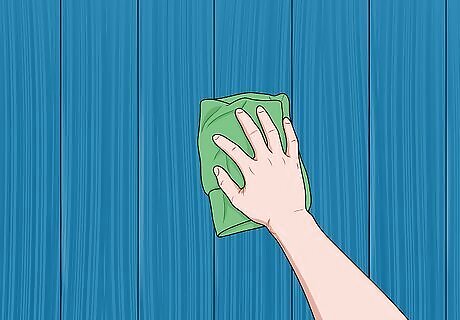
Dry the paneling using a clean, lint-free cloth. Once you've cleaned the entire section of paneling you wish to work on, you can dry the paneling by lightly rubbing or blotting it with a clean cotton cloth. Although painted paneling is less likely to be damaged by water than finished or unfinished paneling, it's still wise to remove the water from the paneling quickly.















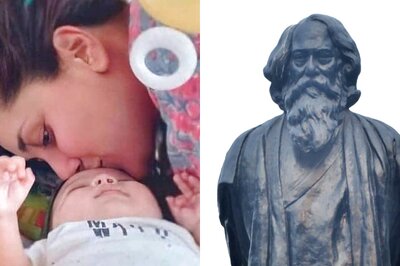



Comments
0 comment